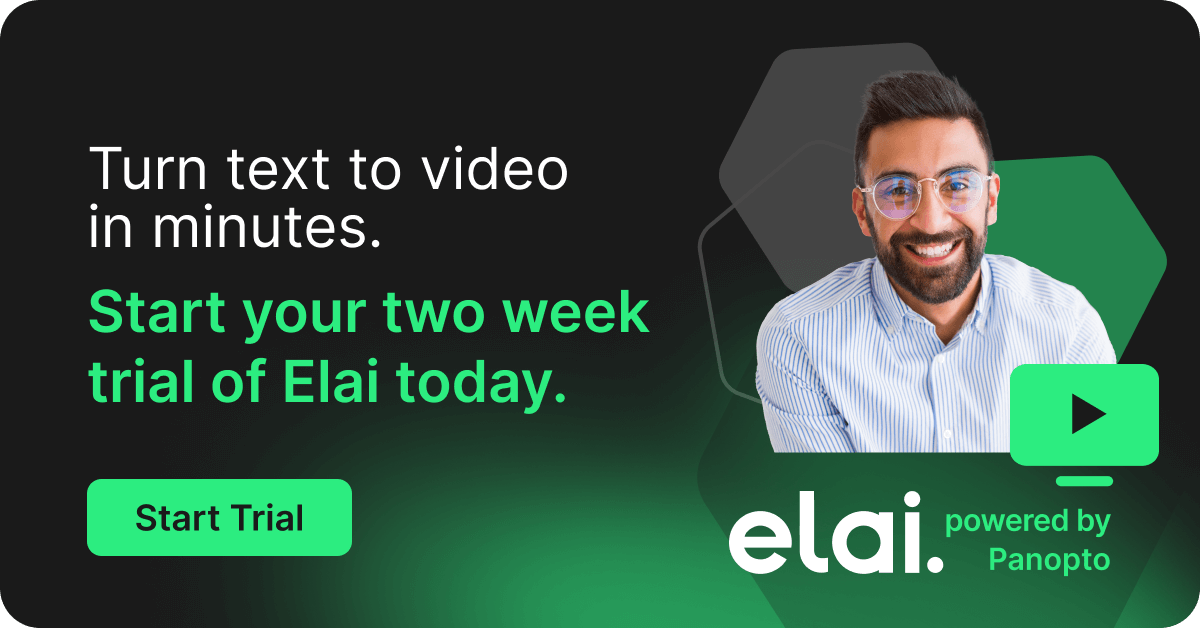- Uncategorized
Using Lecture Capture for Learning and Teaching in Science at the University of Wolverhampton
A guest blog post from Gemma Witton – ELearning Advisor, Centre for Technology Enhanced Learning, University of Wolverhampton
In our previous guest blog post, published on the Panopto website last week, we outlined our Science Centre’s innovative approach to teaching and learning and how we managed the implementation and initial roll-out of video and lecture capture technologies into our classrooms.
 With Panopto established as our core video management and recording system, and many of the initial technical challenges resolved, we then turned our attention to gathering feedback from staff and students so that we could refine and hone these new learning technologies on an ongoing basis. As part of the feedback process, a user group took place halfway through the pilot which included members of both academic and support staff. Overall, their feedback was overwhelmingly positive, with staff suggesting that the recording spaces were fit for purpose and allowed them to capture in detail the procedures and techniques that they needed to share with their students. They also commented that the Panopto software was easy to use. The user group also highlighted a few small changes we could make to improve the recording experience for academic staff, giving us useful insights into what staff are looking for in a lecture recording system.
With Panopto established as our core video management and recording system, and many of the initial technical challenges resolved, we then turned our attention to gathering feedback from staff and students so that we could refine and hone these new learning technologies on an ongoing basis. As part of the feedback process, a user group took place halfway through the pilot which included members of both academic and support staff. Overall, their feedback was overwhelmingly positive, with staff suggesting that the recording spaces were fit for purpose and allowed them to capture in detail the procedures and techniques that they needed to share with their students. They also commented that the Panopto software was easy to use. The user group also highlighted a few small changes we could make to improve the recording experience for academic staff, giving us useful insights into what staff are looking for in a lecture recording system.
During the same user group session, academic staff also commented positively on the impact the technology was having on both their teaching of practical science and their general academic practice. Anecdotal evidence suggests that students seem more organised and prepared for the practical sessions as a result of having access to recorded demonstrations in advance. Consequently, academics are already noticing the benefits for students along with subtle changes in their roles and relationships with students. A Senior Lecturer in Microbiology commented:
“They seem so much more organised when they come to practical sessions having had access to the videos. It’s good because they are becoming independent learners but it’s strange because they don’t seem to need us as much!”
The student response to the recorded materials has also been positive. Below are some typical comments from an anonymous mid-module evaluation survey of a combined biomedical science and pharmacy module on microbiology:
“I think the practical demonstration videos are very helpful and save a lot of time in the practical sessions.” (Level 4 Student)
“I can pause/rewind it which is much easier for taking notes as, with dyslexia, I often miss things.” (Level 4 Student)
“ABSOLUTELY LOVE THEM! I can go at my own speed and write down anything that I find difficult, without missing anything, so I can look it up afterwards.” (Level 4 Student)
The benefits for students with additional learning needs are evident in the student feedback. Key colleagues in the University’s renowned Student Enabling Centre (SEC), including Disability Advisors, Sign Language Interpreters and Notetakers, have been involved in early discussions around the accessibility and suitability of the viewing interface for different groups of students. Forthcoming changes to the Disabled Student Allowance (DSA) mean that there may be lower levels of funding for supporting students with additional needs in future. SEC are enthusiastic about the possibilities for lecture capture to alleviate some of the impact of the funding cuts and have agreed to work with the project team to ensure we provide the most accessible lecture capture solution.
There is still capacity for growth in the use of lecture capture to support the sciences, and despite slightly lower levels of engagement than expected, the early statistics are encouraging. During semester 2, faculty staff produced 71 individual recordings, representing around 100 hours of recorded materials and over 2500 hours of viewing by students. There are over 650 active users in the system and the trend with all of these figures is an upward curve.
An interesting side-effect of our pilot project has been the innovative use of the lecture capture software by academics outside of the Science Centre. Faculty colleagues have sought advice on using the recording software on their university PCs and personal laptops or mobile devices so that they can record materials out in the field, unpack assessment briefs in response to student questions, provide group or individual feedback and for students to record their own work.
Subsequent to a positive outcome in the project evaluation and approval of the ongoing business case, the post-pilot plan is for a staged institutional roll-out of lecture capture technologies, developing discipline-specific best practices for other faculties and departments, and enabling academics to become autonomous in the production of video materials to support the student experience.
If you’re interested in lecture capture and video management technologies for your institution, you can contact a member of the Panopto team to book a free trial.




